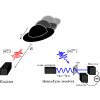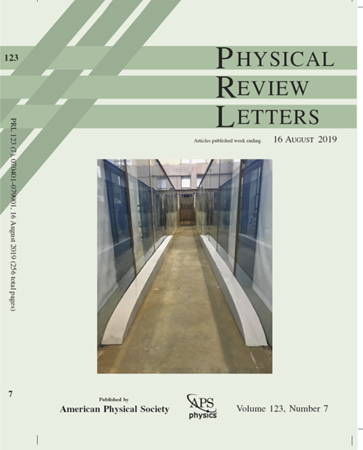Heisenberg-Limited Quantum Lidar for Joint Range and Velocity Estimation
IF 8.1
1区 物理与天体物理
Q1 PHYSICS, MULTIDISCIPLINARY
引用次数: 0
Abstract
We propose a quantum lidar protocol to jointly estimate the range and velocity of a target by illuminating it with a single beam of pulsed displaced squeezed light. In the lossless scenario, we show that the mean-squared errors of both range and velocity estimations are inversely proportional to the squared number of signal photons, simultaneously attaining the Heisenberg limit. This is achieved by engineering the multiphoton squeezed state of the temporal modes and adopting standard homodyne detection. To assess the robustness of the quantum protocol, we incorporate photon losses and detuning of the homodyne receiver. Our findings reveal a quantum advantage over the best-known classical strategy across a wide range of round-trip transmissivities. Particularly, the quantum advantage is substantial for sufficiently small losses, even when compared to the optimal—potentially unattainable—classical performance limit. The quantum advantage also extends to the practical case where quantum engineering is done on top of a strong classical coherent state with watts of power. This, together with the robustness against losses and the feasibility of the measurement with state-of-the-art technology, make the protocol highly promising for near-term implementation.

用于联合测距和测速的海森堡限制量子激光雷达
我们提出了一种量子激光雷达协议,通过用一束脉冲位移挤压光照射目标,来联合估计目标的距离和速度。在无损情况下,我们证明测距和速度估计的均方误差与信号光子数的平方成反比,同时达到海森堡极限。这是通过对时态模式的多光子挤压态进行工程设计并采用标准同调检测实现的。为了评估量子协议的稳健性,我们将光子损耗和同调接收器的失谐纳入其中。我们的研究结果表明,在广泛的往返透射率范围内,量子策略比最著名的经典策略更具优势。特别是,在损耗足够小的情况下,量子优势非常明显,即使与最佳--可能无法达到的--经典性能极限相比也是如此。量子优势还可扩展到在具有瓦级功率的强经典相干态基础上进行量子工程的实际情况。这一点,再加上对损耗的稳健性和利用最先进技术进行测量的可行性,使得该协议在近期内的实施前景非常广阔。
本文章由计算机程序翻译,如有差异,请以英文原文为准。
求助全文
约1分钟内获得全文
求助全文
来源期刊

Physical review letters
物理-物理:综合
CiteScore
16.50
自引率
7.00%
发文量
2673
审稿时长
2.2 months
期刊介绍:
Physical review letters(PRL)covers the full range of applied, fundamental, and interdisciplinary physics research topics:
General physics, including statistical and quantum mechanics and quantum information
Gravitation, astrophysics, and cosmology
Elementary particles and fields
Nuclear physics
Atomic, molecular, and optical physics
Nonlinear dynamics, fluid dynamics, and classical optics
Plasma and beam physics
Condensed matter and materials physics
Polymers, soft matter, biological, climate and interdisciplinary physics, including networks
 求助内容:
求助内容: 应助结果提醒方式:
应助结果提醒方式:


